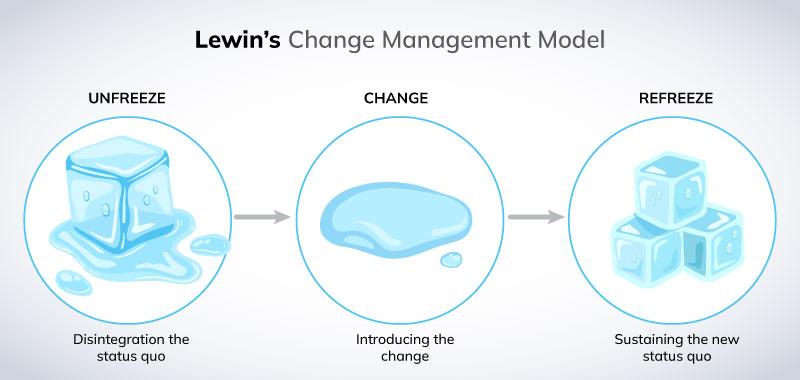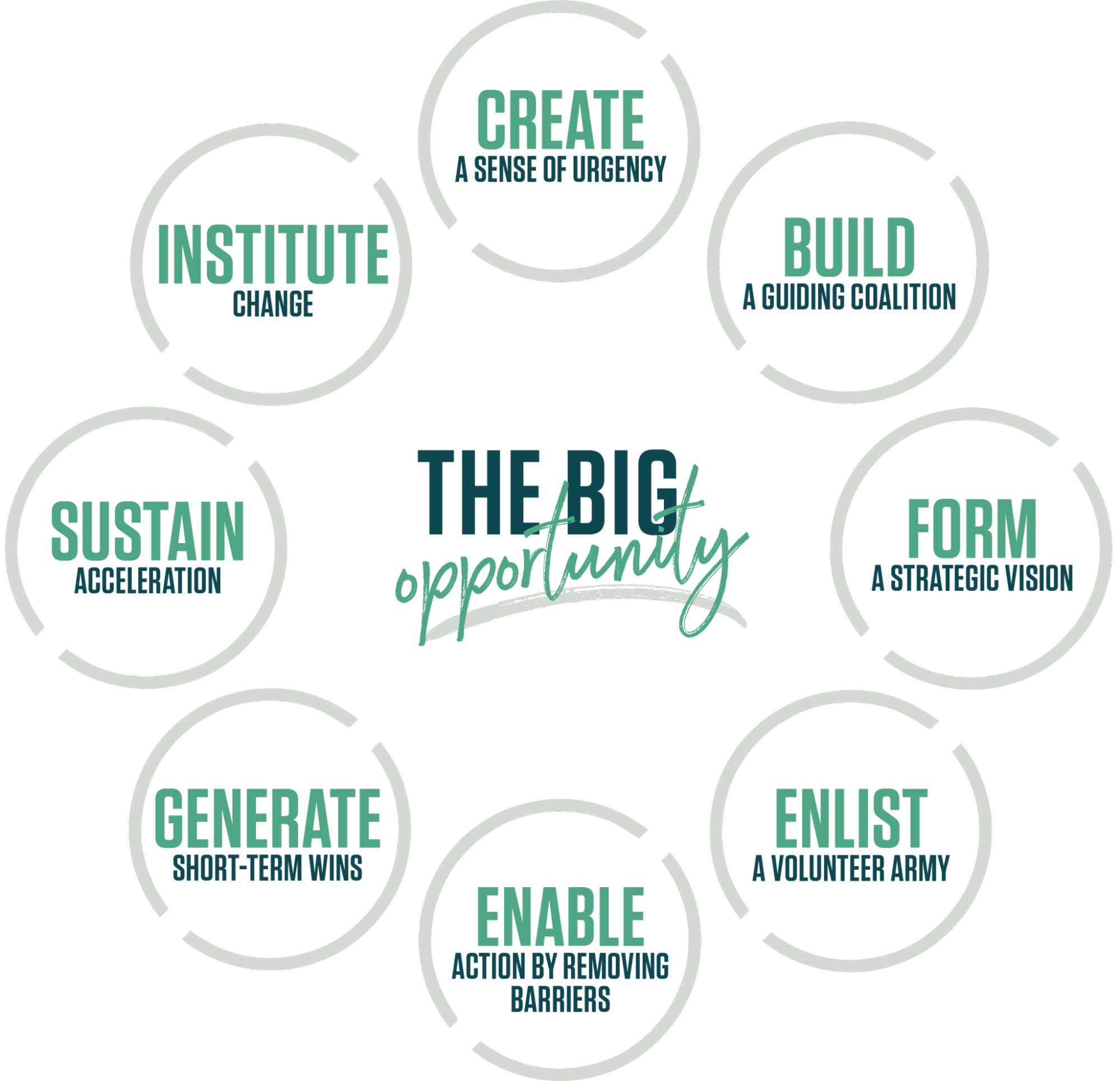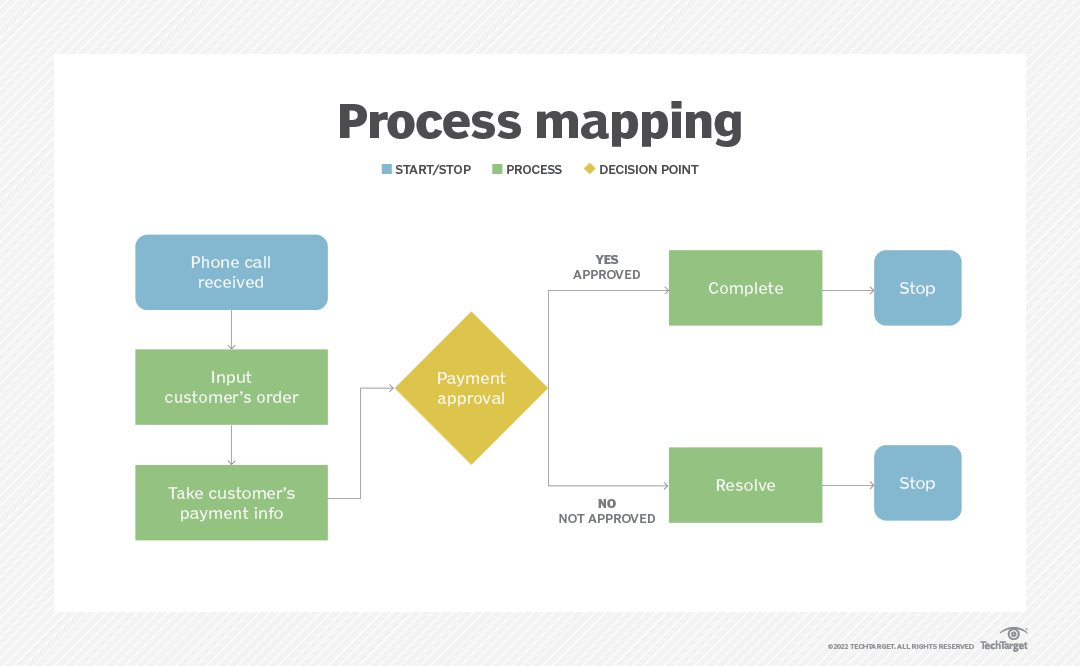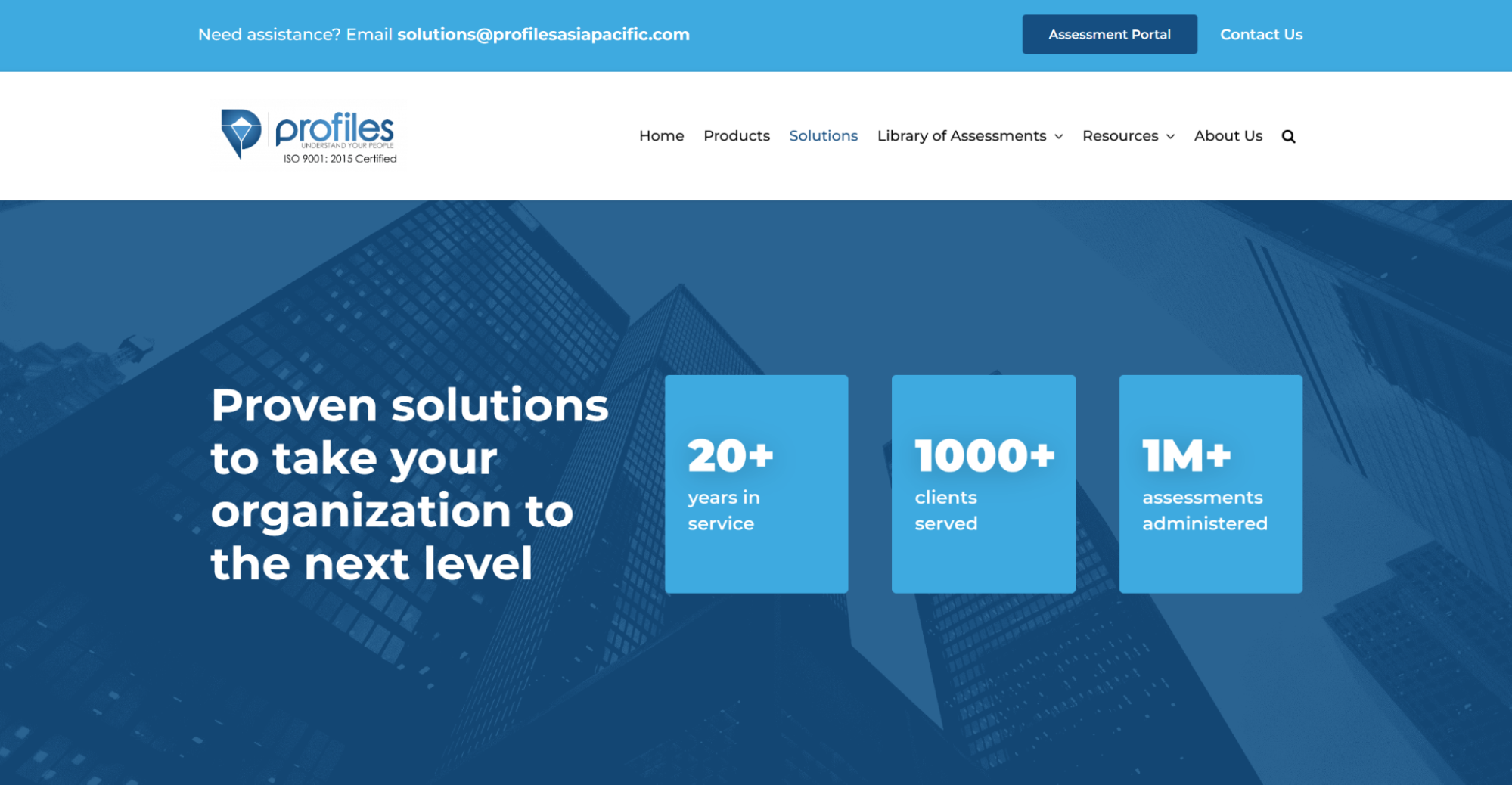To stay relevant in the modern world, organizations must constantly evolve. Whether due to economic conditions, strategic shifts, technological advancements, or internal growth, the ability to pivot is necessary to survive.
While it may cause changes in your company’s entire structure, vision, and mission, it can, in turn, lead to exceptional benefits. Think of how YouTube, now one of the world’s largest video sharing and social media platforms, was once a dating site, or how Nintendo went from manufacturing playing cards to becoming a giant in the video game industry.
These kinds of transformations can shake up your entire organization and induce a period of uncertainty. However, change management allows you to thrive during such times, and this article will explain how.
What is change management?
Change management is a holistic approach that can help you navigate changes in your business’s goals, processes, or technologies — aspects that are tied to another practice called organizational development.
Its systematic methodologies involve analyzing transformations to your business, then planning, implementing, and evaluating strategies that allow it and its people to adapt continuously with minimal friction.
Change management not only involves understanding and preparing for pivots in various organizational facets but also executing and sustaining them over the long term.
Types of change management
The practice can be categorized into four main types, all of which differ based on the shifts you’re facing:
- Strategic: This involves dealing with major changes in your business’s approach and can encompass your mission, vision, policies, and processes. Modifications to any of these can result from industry trends, new markets you want to take advantage of, or threats that put your competitive edge at risk.
- Structural: Changes to your organization’s structure typically indicate the need to optimize your internal operations. That entails redefining roles, revising hierarchies, streamlining procedures, and more. Company expansion, changes in leadership or regulations, mergers and acquisitions, and the like can trigger these occurrences.
- Cultural: Your business culture is built around forces that influence individuals across all levels, namely, norms, values, and conduct. Transforming these necessitates promoting and nurturing new behaviors across teams, which is a long, gradual process that produces positive changes to productivity and engagement. Managing such shifts involves supporting employees in new routines, workplace environments, and practices.
- Technological: Technology evolves constantly and rapidly. Falling behind in this area can negatively impact your business, but keeping up with these advancements poses challenges as well.
New tools, for example, will require learning new skills and workflows, which your workforce may find disagreeable. So, you have to manage and overcome these situations to support your organization’s overall success.
Various approaches to managing change
How you should handle the above changes will vary and boils down to how you’ll carry out your plans.
Incremental
A gradual approach allows your business and its stakeholders to adjust to shifts with less friction. It implements strategies at slow, step-by-step intervals while working towards achieving an overarching goal.
Developmental
This involves your organization’s consistent, long-term evolution and a more proactive attitude. It doesn’t have a firmly established end goal and instead constantly adapts to fluctuating business environments.
As such, tactics like regular employee training and development, process optimizations, and investments in technology come into play.
Transitional
This style manages your business’s move from its original state of operations to one that responds better to trends, regulations, or whatever powerful force within a set time frame.
Since strategies here aim to meet scheduled objectives, they may create more pressure and uncertainty, which can then unsettle employees. As a result, overcoming their resistance to imminent changes will be your primary challenge.
Transformational
Taken in response to strong, external disruptions to your business, this approach calls for modifications to the company’s very foundations. Since the changes will be extreme, a transformational implementation will prove difficult for your personnel and thus see the most resistance.
Think of how the COVID-19 pandemic shook many organizations to their cores, forcing many to alter their business models completely. For example, brick-and-mortar brands heavily pivoted towards eCommerce, while offices turned to remote setups.
As a result, certain roles were instantly made inessential or redundant, and subsequently, workforces and operations were significantly reduced. Employee needs and wants drastically changed as well, and new business practices immediately arose.
Widely used change management models
You can also apply an assortment of change management paradigms to your chosen approach. To provide a clearer idea of this concept, here’s an overview of some commonly used ones:
Lewin’s Change Management Model

Image: CrowJack
Lewin’s Change Management Model likens a company to an ice cube, stating that it must “unfreeze” itself to undergo any transformations, then “refreeze” to establish and maintain them. It’s three stages are:
- Unfreezing: In this step, you dissolve long-established practices, prepare your entire organization for upcoming changes, and help individuals across all levels understand why they’re necessary.
- Changing: This phase sets your plans in motion and so takes the most time. Here, you guide employees through uncertainties, convince them to support the company’s new direction, and have them actively carry it out.
- Refreezing: At the last part of the model, you monitor and evaluate the introduced changes, keep what works, and adjust what doesn’t. This is where roles and hierarchies typically stabilize.
Kotter’s 8-Step Model

Image: Kotter
After observing numerous leaders and organizations, Dr. John Kotter formulated this framework consisting of eight key steps:
- Create a sense of urgency: For your efforts to bear fruit, people across the organization have to want change. So, you’ll first explain the need for the adjustments, then spark motivation to get the ball rolling.
- Build a guiding coalition: This involves identifying key stakeholders across all levels and then building a team that can implement and maintain changes, as well as guide employees through them.
- Form a strategic vision: At this step, you establish your vision, which directs the business’s future, then develop strategies to achieve it.
- Enlist a volunteer army: Organizational changes can only occur through the contributions of many. To gain stakeholder buy-in, clearly communicate your vision, how to reach it, and how your people will benefit.
- Enable action by removing barriers: To succeed, business structures, processes, and employees must be aligned. So, overcoming obstacles like resistance to change is the next vital step.
- Generate short-term wins: Define short-term goals, then recognize and reward people who achieve them. Doing so keeps them motivated and engaged throughout the process.
- Sustain acceleration: Maintain your efforts once they gain traction. That means continuously implementing, monitoring, evaluating, and improving your strategies.
- Institute change: The final step is solidifying new behaviors, roles, tools, and procedures that contribute to the organization’s success. Ensuring they continue until they replace old habits will be up to you and leadership.
ADKAR Model
Created by Prosci’s founder, Jeff Hiatt, the ADKAR Model emphasizes individual transitions. It outlines five key outcomes people must achieve for transformation to succeed:
- Awareness: They must be conscious of the need for the business’s change.
- Desire: They should have aspirations to contribute to the said change.
- Knowledge: They need to recognize how to carry out change.
- Ability: They must possess competencies necessary to play their part effectively.
- Reinforcement: They should be able to sustain the change that took place.
Both you and leadership will have a massive role in how well individuals across the organization reach these desired results. You must explain why certain aspects of the business will be altered, define people’s roles in the process, and then develop and support them throughout.
McKinsey 7-S Framework

Image: McKinsey
The McKinsey 7-S model analyzes your organization, focusing on how vital the role of coordination, rather than structure, is in its success. It’s built on examining the interaction between seven key elements:
- Style: This can also refer to culture, particularly how things are done in the company, as well as its informal rules.
- Skills: This tackles both institutional and individual competencies your workforce possesses and how they work together.
- Systems: This covers your organization’s internal processes or, simply put, how work is done.
- Structure: This scrutinizes how your company is organized, primarily its hierarchies and authority relationships.
- Staff: This looks into the organization’s people, particularly their talents, how they develop, their diversity, etc.
- Strategy: This dissects what your business is trying to do to gain a competitive advantage — something that’s prone to constant change.
- Shared values: This revolves around what the organization aims to achieve, whether it’s to profit, make a positive social impact, or become environmentally friendly.
Other models
There are additional frameworks you can utilize, but discussing them in detail will take too long. For easy reference, here are some you can look into:
- Nudge Theory: This concept is built on behavioral science and the use of subtle suggestions and evidence that “nudge” employees toward desired changes.
- Bridges’ Transition Model: This concentrates on effectively understanding and managing individual experiences during changes. It tackles three stages: “Ending What Currently Is,” “the Neutral Zone,” and “the New Beginning.”
- Kübler-Ross Change Curve: Based on the five stages of grief, this method is also centered on a person’s emotional reactions throughout a transition. Its stages include: shock, denial, frustration, depression, experiment, decision, and integration.
- Satir Change Model: This also addresses the human side of change, monitoring how employee emotions and performance progress through: Late Status Quo, Resistance, Chaos, Integration, and New Status Quo.
The benefits of change management
Now that you have an understanding of its core concepts, let’s dive into the advantages change management offers.
Enhance employee morale
The practice of change management aims to guide your business and its employees through major transformations in leadership, operations, or some other influential aspect. It necessitates upskilling and reskilling initiatives, for example, to help personnel adjust to new processes, as well as wellness programs that let them manage stress brought about by such shifts.
Since these types of endeavors smoothe employee transitions and further their careers, this can maintain a positive work environment and improve their engagement.
Increase productivity
Effective change management eases employees into new workflows, routines, etc., while minimizing disruptions. Less friction in these adjustments can reduce your workforce’s worries and allow everyone to maintain consistent levels of productivity.
Mitigate uncertainty, maintain trust
Transparency is a key component of successful change management, so it’s necessary to incorporate different communication strategies to achieve this.
Properly articulating the motivations behind your business changes, as well as how they’ll be carried out and monitored, addresses any uncertainties and fosters employee trust.
Improve adaptability
Change management practices equip teams and individuals with skills and behaviors that let them comfortably undergo transitions. These instilled characteristics enhance your workforce’s overall flexibility, which, in turn, makes your whole organization more adaptable to future shifts as well.
Sustain growth
Organizational growth is typically a continuous, long-term, uncomfortable process that entails undergoing many transitions. However, successful change management efforts clear the path forward and position your business for sustainability.
The challenges of change management
Although change management is extremely beneficial, it still poses some challenges.
Lack of leadership support
We mentioned how leadership is critical to this approach. If your plans don’t align with the organization’s values, executives and management may not be receptive, which can then result in misunderstandings and a lack of commitment. That kind of behavior from the top can influence team members as well and heavily impede your change management efforts.
Resistance to change
Significant alterations to technology, processes, leadership, or something else will disrupt long-established behaviors and routines.
Roles will be redefined, and employees must adjust, so the overall experience can cause stress and discomfort. As a result, your personnel is more likely to resist the planned changes and contradict your initiatives. Quelling their concerns will also be taxing.
General confusion
When changes aren’t presented in a way that’s easily understandable, it can instill anxiety and confusion across all levels, especially if your plan disrupts the status quo.
That’s why we’ve persistently emphasized the importance of communication; everyone should recognize the reason behind the business’s transformation, how it’ll take place, and its benefits.
Inadequate resources
Extensive shifts in your company’s operations, tools, leadership, and workforce necessitates a considerable investment of time, money, effort, and manpower. Despite the upsides that change management can deliver, resources can easily run out, especially if the business has limited runway.
Employee burnout
Constantly refining your company allows it to flourish for the long term. However, too many fluctuations can result in change fatigue and produce overwhelmed or apathetic employees. During such intense periods, your staff can easily experience burnout.
Key components of effective change management
While having a basic overview of change management isn’t enough, knowing its crucial elements will contribute to the success of your efforts. Moreover, most of them tie in with the previous points for easier implementation.
Thorough preparation
Drafting a change management plan isn’t as simple as, “If X happens, then we do Y to address it.” The process requires a thorough analysis of your company’s culture, structure, operations, people, and other crucial aspects.
You’ll need to gather as much data as possible, use that to identify problems and opportunities, and then formulate strategies based on the synthesized information. From there, you can draw up a clear roadmap for how changes will be carried out and handled.
Active leadership
Your business’s leaders must firmly understand the business’s transformations and visibly support them. Since what they do influences their teams, it’s their responsibility to align personnel across all levels. Having competent superiors at the helm who support their employees can drive positive adoption and ensure your plans bear fruit.
Employee participation
The people on the ground will take the brunt of your business’s disruptions, so it’s extremely important that you involve them throughout the process.
Most importantly, always listen. Their perspectives allow them to identify problems and opportunities you’d otherwise miss. Learn about the difficulties your employees face and ask them about improvements that can help with the transitions.
Not only will the organization’s decision-making improve, but involving your workforce in these meaningful endeavors will enhance their engagement as well.
Openness and clarity
We’ve mentioned how transparency is vital for change management. Your employees’ workflows and daily routines will be completely rattled, so keep them in the loop.
Be clear about your goals, how your changes can achieve them, and how transitions will take place. This helps gain people’s trust and support while minimizing resistance, confusion, and anxiety.
Training and development opportunities
To help employees acclimate to structural, cultural, technological, and procedural alterations to your company, you’ll need to launch training and development programs.
So, to address newly introduced skill gaps and ease your people’s transitions, invest in their careers,and nurture their competencies. This also helps you earn their loyalty and engagement.
Adaptability
As you guide the organization through tumultuous periods, unforeseen circumstances will inevitably arise. For example, as operations, tools, and necessary skills transition to new ones, you may find that redefining roles, then training and developing your existing workforce isn’t enough. Recruiting top talent might be your next option, and that requires an available pool of resources.
Simply put, your strategies should always be open to any necessary modifications, especially during instances when new company needs are born.
Recognition and rewards
Periods of organizational change can prove strenuous for employees. Rebuilding and adjusting to new routines and work environments is a difficult process, so do your best to retain talent and keep them motivated.
Show appreciation, recognize their accomplishments, and reward them for their contributions, whether it be through a small monetary bonus, a paid break, or a chance to participate in high-profile projects.
Consistent monitoring and evaluation
Despite careful preparation and implementation, your change management initiatives won’t always yield desired results. However, establishing key performance indicators (KPIs) and determining the activities that impact them will help you measure progress and encourage stronger outcomes.
For instance, employee engagement metrics like employee net promoter score (eNPS), as well as retention or turnover rate, can convey job satisfaction and show how committed people are to your organization.
By regularly monitoring and evaluating these and other metrics, you can pinpoint problems and opportunities, then make the necessary improvements.
Best practices for change management
We’ve covered the pillars of change management, but to take it a step further, here are a few principles that’ll keep your business’s goals at the center of your efforts and help your employees successfully overcome any challenges.
Follow a top-down approach
Start with your leaders, then work your way down. This establishes a clear chain of communication and lets managers fully understand shifts before passing on information to their teams.
As a result, you’ll enjoy a more orderly process, and employees will have knowledgeable people to turn to with any questions or concerns.
Provide facts and figures
A simple explanation isn’t enough to gain your employees’ trust. To bring them fully on board, the reasons behind any major transitions should make sense.
So, support your plans with historical data and case studies. If the company’s annual revenue figures back up your initiatives, share them. If you notice competitors pivoting due to major market trends, point them out as well.
Hold people accountable
Firmly establish your employees’ responsibilities with regard to the company’s upcoming changes. To avoid confusion, give them a clear idea of what they’re expected to handle. This provides direction in those uncertain times.
Put feedback mechanisms in place
About three-fourths (74%) of employees think leaders must do more to understand why people resist change. Setting up open lines of communication that let teams raise their concerns and highlight areas of improvement is one way to accommodate that demand.
Your workforce should feel they can freely approach their superiors when they have questions or face any issues. The insight they possess can even help you identify what does and doesn’t work during transitional periods. Feedback loops are invaluable when your business operations are in flux.
Reinforce beneficial changes
At some point, you’ll begin to notice tangible results from your company’s modifications. For example, a new tool could alter workflows and negatively impact productivity at first. But as employees become more proficient, you could notice they’re performing better compared to the previous processes.
In such instances, you must further cement the change and emphasize the efforts to maximize it like more advanced training.
Groom future leaders from within
A change in leadership can easily shake up an entire organization, but succession planning prepares everyone for this exact situation to minimize friction.
It guides you to recognize and develop potential decision-makers among your ranks to maximize the talent you already possess. The process even opens up opportunities to fill roles as they’re redefined, emptied, or created.
Emphasize employee wellness
We’ve mentioned multiple times how significant transitions can cause employees stress. Since notable change management models focus on the human side of the process, incorporate initiatives centered on your workforce’s well-being.
Whether it be stress management coaching, fitness programs, or wellness checks, make sure you prioritize their health and work-life balance.
Use the right tools
Various tools can streamline new company procedures and assist in areas such as:
- Training
- Onboarding
- Communication
- Project management
They’re extremely helpful for overseeing change and helping employees rebuild routines, ease into initial learning curves, and minimize stress.
How to redefine job roles for existing employees
As your organization accommodates new technologies, structures, processes, and the best practices we’ve tackled in this article, how jobs are carried out will also evolve. Resulting roles can become wildly different from their previous incarnations but will have the same employees performing them.
Redefining positions compels personnel to undertake tasks or develop skills they weren’t originally hired for. Here are some helpful tips to guide you (and employees) through the process.
Establish the role’s requirements
Most organizations establish some form of job profiling to define what’s needed from a role, but those profiles tend to be generic, old, or simply absent.
Conducting interviews with key employees, including those who currently occupy the reinvented position, will help you determine the responsibilities performed and skills needed. For example, you may find a change in the technology or tools you use rendered a former requirement unnecessary, making someone who was previously qualified irrelevant.
Assign tasks based on strengths
Many workplaces have teams tackle projects that are interlinked. When individuals with similar skill sets work together, you have more freedom to assign tasks based on individual strengths.
Hold meetings to identify duties that employees dislike or underperform at and, in turn, uncover those who are proficient at or enjoy them. Reallocating these tasks in a balanced manner helps improve team efficiency and morale.
Create job profiles
Excellent job profiling often requires:
- A capable third-party assessor or strong internal HR
- A competency framework defining soft skills that contribute to success
- The ability to analyze what success in a role looks like, rather than meeting expectations
These combined components help you discover solid performers whose soft skills fall short, or underperformers who lack hard skills and motivation. Then, you can create and offer the appropriate training and developmental program to improve their performance.
Conduct one-on-one meetings
Redefining roles can cause employees to fear for their jobs, so winning buy-in for change is one of the most difficult aspects of this particular alteration.
Have one-on-one meetings with leaders to clarify the changes your company will undergo and their effects on specific roles. Encourage them to take the same approach with their teams. This helps many better understand the process and gain a firm grasp of what’s expected of them. They’ll also feel more comfortable adapting to the upcoming adjustments.
Additionally, face-to-face discussions provide opportunities to assess individual strengths and weaknesses and tell you why, where, and how individuals have to develop.
Utilize self-evaluations
Ask employees to submit monthly progress reports, or have them use performance goal thes, competencies, or third-party tools to conduct self-evaluations. This gives your personnel the chance to examine themselves based on new standards and requirements, then pinpoint areas that need improvement.
Self-evaluations also offer your workforce opportunities to gauge their performance from a personal perspective and enhance their motivation.
Change management resources
At this point, you’re well equipped to kick-start your change management endeavors. To cap things off though, we’ve listed a few resources that can take your initiatives to the next level.
Business process mapping

Image: TechTarget
TechTarget’s guide gives an easy-to-understand overview of business process mapping. Simply put, it involves the use of flow charts to visually depict end-to-end company processes.
Through it, you can gain a clear, sequential picture of what’s needed to achieve specific outcomes like completely fulfilling a service, selling and delivering a product, etc.
When applied to change management, consider the people involved and the resources needed as well. It’s extremely handy for spotting procedural inefficiencies and areas in need of improvement.
Certified Change Management Professional™ (CCMP™)
This certification is offered by the Association of Change Management Professionals (ACMP), and it cements your proficiency in change management’s best practices. To qualify, you must take courses, undergo training, and complete tests from the ACMP’s Qualified Education Provider (QEP) program.
Doing so allows you to meet the organization’s Standard for Change Management, which encompasses a deep knowledge of processes, tasks, and activities needed for overseeing organizational shifts.
Culture mapping

Image: Medium
Culture mapping is a process that visualizes an organization’s cultural values, norms, behaviors, etc. This practice uncovers information that can strongly impact your change management initiatives.
For example, positive enablers like competent management and clear goals — cultural facets that lead to desirable behaviors — can maximize a project’s success and minimize its risk. On the other hand, blockers such as a lack of performance bonuses and wellness programs can do the opposite.
Assessments and change management solutions

Profiles Asia Pacific assists various Philippine companies as they undergo major organizational shifts. Our comprehensive library of assessments can identify employee strengths, weaknesses, strengths, and behaviors to ensure their competencies perfectly match the new jobs and responsibilities created through the role redefining process.
We also provide solutions that can support your change management efforts, some of which include:
- Employee development: Re-skill, upskill, and right-skill personnel to meet the company’s needs as they unfold.
- Leadership development: Identify and develop strong leaders who can steer your organization through transitions.
- Performance management: Pinpoint and remedy performance issues that result from your business’s transformations.
- Succession planning: Build a talent pipeline that facilitates a smooth change in leadership and transfer of duties.
- Strategic talent management: Have the right people in the right jobs at the right time throughout your business’s transformation.
If you have any questions, simply get in touch!
Wrapping up — Maneuver through dynamic landscapes with change management
To thrive in constantly evolving business environments, change management is critical. The adaptability it provides can steer organizations through volatile periods, but to carry it out it effectively, remember these key takeaways:
- Adopt an approach and model appropriate for the type of changes your organization is experiencing.
- Change management is extremely beneficial, but prepare yourself for its challenges.
- Involve individuals across all levels; everyone plays a key role.
- Emphasize your employees’ well-being.
Remember to implement the best practices we discussed as well. Once you take these factors into account and plan for each accordingly, you’ll foster a smooth transition for your business, employees, and achieving long-term sustainability.




